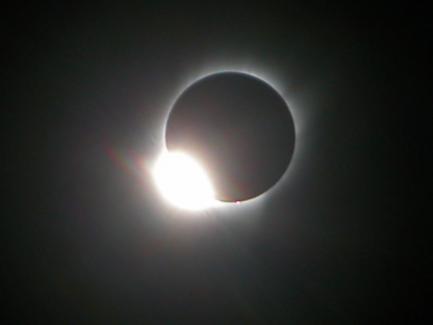National Air and Space Museum Is Washington’s Source for the Solar Eclipse
The Smithsonian’s National Air and Space Museum will serve as a major source of information, educational activities and experiences in the Washington, D.C., area on and around the total solar eclipse Aug. 21, an event that has not occurred in the U.S., coast-to-coast in nearly 100 years. “Your Eclipse” family days will be held at the museum on the National Mall July 8 and at the museum’s Steven F. Udvar-Hazy Center in Chantilly, Va., July 15. On the day of the eclipse, programming will be held at both buildings and online. There will be excellent viewing opportunities at the Phoebe Waterman Haas Public Observatory just outside the entrance to the museum in Washington. The museum’s popular 30-minute live webcast, “STEM in 30,” will broadcast from Liberty, Mo., which is in the “path of totality,” the narrow path across the country where the moon’s shadow will completely eclipse the sun.
Both “Your Eclipse” family days will include educational activities that will teach children and adults about the science of an eclipse, where the best viewing locations are and how to safely view it. Visitors can participate in hands-on activities and take away information from NASA and their own solar-viewing glasses. Special guests include Lou Mayo, NASA astronomer, July 8 at the Mall museum, and C. Alex Young, NASA eclipse program principal investigator, at the Udvar-Hazy Center July 15. Both will participate in moderated conversations with museum staff about how to prepare for watching the eclipse.
On the day of the eclipse, Aug. 21, both museum locations will have safe solar telescopes for viewing—at the Observatory at the museum in Washington and outside the entrance of the Udvar-Hazy Center—and activities such as making pinhole eclipse viewers and free eclipse glasses giveaways. At the Mall museum, a live view of the eclipse from the path of totality will be broadcast on screens throughout the museum.
The museum will present online programs for those that cannot come to its two locations Aug. 21. There will be a live webcast of “STEM in 30” on the museum’s website, https://airandspace.si.edu/connect/air-and-space-live. The show’s hosts will view and explain the phenomenon of the solar eclipse. The eclipse will also be broadcast live from the Observatory and can be viewed here http://www.ustream.tv/channel/smithsonian-public-observatory-project. For information about the eclipse and to find out more about the museum’s programming, visit https://airandspace.si.edu/eclipse-2017.
The National Air and Space Museum’s Steven F. Udvar-Hazy Center is located in Chantilly, Va., near Washington Dulles International Airport. The museum building on the National Mall in Washington, D.C., is located at Sixth Street and Independence Avenue S.W. Both facilities are open daily from 10 a.m. until 5:30 p.m. (closed Dec. 25). Admission is free, but there is a $15 fee for parking before 4 p.m. at the Udvar-Hazy Center.
Note: Summer hours for the National Mall building are 10 a.m. until 7:30 p.m. and in effect until Sept. 9, unless otherwise noted. Check the museum’s website for the most up-to-date times.
# # #
SI-256-2017
Alison Wood
202-633-2376



